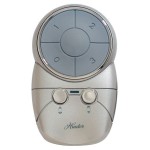Essential Aspects of Lighting Kitchen Ceiling
When it comes to designing a kitchen, lighting plays an indispensable role in creating a space that's both functional and aesthetically pleasing. Among the various lighting options available, ceiling lights are a crucial element that can illuminate the entire space evenly, creating a welcoming and comfortable atmosphere for meal preparation, cooking, and socializing.
Choosing the right ceiling light for your kitchen requires careful consideration of several factors, including the size and shape of the room, the overall design scheme, and the task-specific lighting needs. Here's a comprehensive guide to help you navigate the essential aspects of lighting kitchen ceilings:
1. Determine the Ceiling Height
The height of your kitchen ceiling will largely determine the type of lighting you choose. Recessed lighting, for instance, is best suited for high ceilings, as it allows the light to spread evenly without creating glare. If your kitchen has a low ceiling, surface-mounted fixtures or flush-mounted lighting can provide adequate illumination without overwhelming the space.
2. Consider the Kitchen's Size and Shape
The size of your kitchen will influence the number and type of ceiling lights you need. For smaller kitchens, one or two central ceiling lights may suffice, while larger spaces may require a combination of recessed lighting, pendants, or chandeliers to ensure even distribution of light. The shape of the kitchen also plays a role, as you may need additional lighting in areas such as kitchen nooks or peninsulas.
3. Define Task-Specific Lighting
While general ceiling lighting provides overall illumination, it's essential to incorporate task-specific lighting for areas where you need focused light. Under-cabinet lighting is perfect for illuminating countertops for food preparation, while pendant lights can provide targeted light over kitchen islands or dining tables. Consider using dimmers to adjust the brightness of these task-specific lights for optimal comfort and ambiance.
4. Choose the Right Style and Finish
The style of your kitchen ceiling lights should complement the overall design scheme of the space. Traditional kitchens may call for classic chandeliers or pendant lights, while modern kitchens can opt for recessed lighting or track lighting that blends seamlessly into the ceiling. The finish of the lighting fixtures, such as chrome, brass, or brushed nickel, should also match the hardware and accents throughout the kitchen.
5. Consider Energy Efficiency and Maintenance
Energy efficiency is a crucial factor to consider when choosing kitchen ceiling lights. LED lighting is highly energy-efficient and lasts longer than traditional incandescent or fluorescent bulbs, reducing energy consumption and maintenance costs. Additionally, consider the ease of cleaning and maintenance when choosing your lighting fixtures, as kitchen ceilings can accumulate grease and grime.
Conclusion
Lighting kitchen ceilings is an integral part of creating a functional and inviting space. By considering the factors outlined above, you can choose the right ceiling lights that provide adequate illumination, complement the kitchen's design, and meet your specific lighting needs. Remember to incorporate a combination of general, task-specific, and decorative lighting to create a well-lit and visually appealing kitchen.

Kitchen Ceiling Lighting Ideas For Your Home Designcafe

25 Best Kitchen Lighting Ideas 2024 Moonbeam Lightingmoonbeam Blog

Ceiling Lights For Bedrooms Kitchens More Homedepot Ca

Types Of Kitchen Lighting For Your Home 2024 Guide Forbes

Kitchen Lighting At Lumens

Stunning Kitchen Lighting Designs To Transform Into A Designer Space

Kitchen Ceiling Lighting Ideas For Your Home Designcafe

Kitchen Ceiling Lights Enterprise Al Whole Flooring And Lighting

5 Finest Led Ceiling Lighting Options For Your Kitchen Lepro Blog

42 Best Kitchen Lighting Ideas And Light Fixtures For Kitchens
Related Posts








